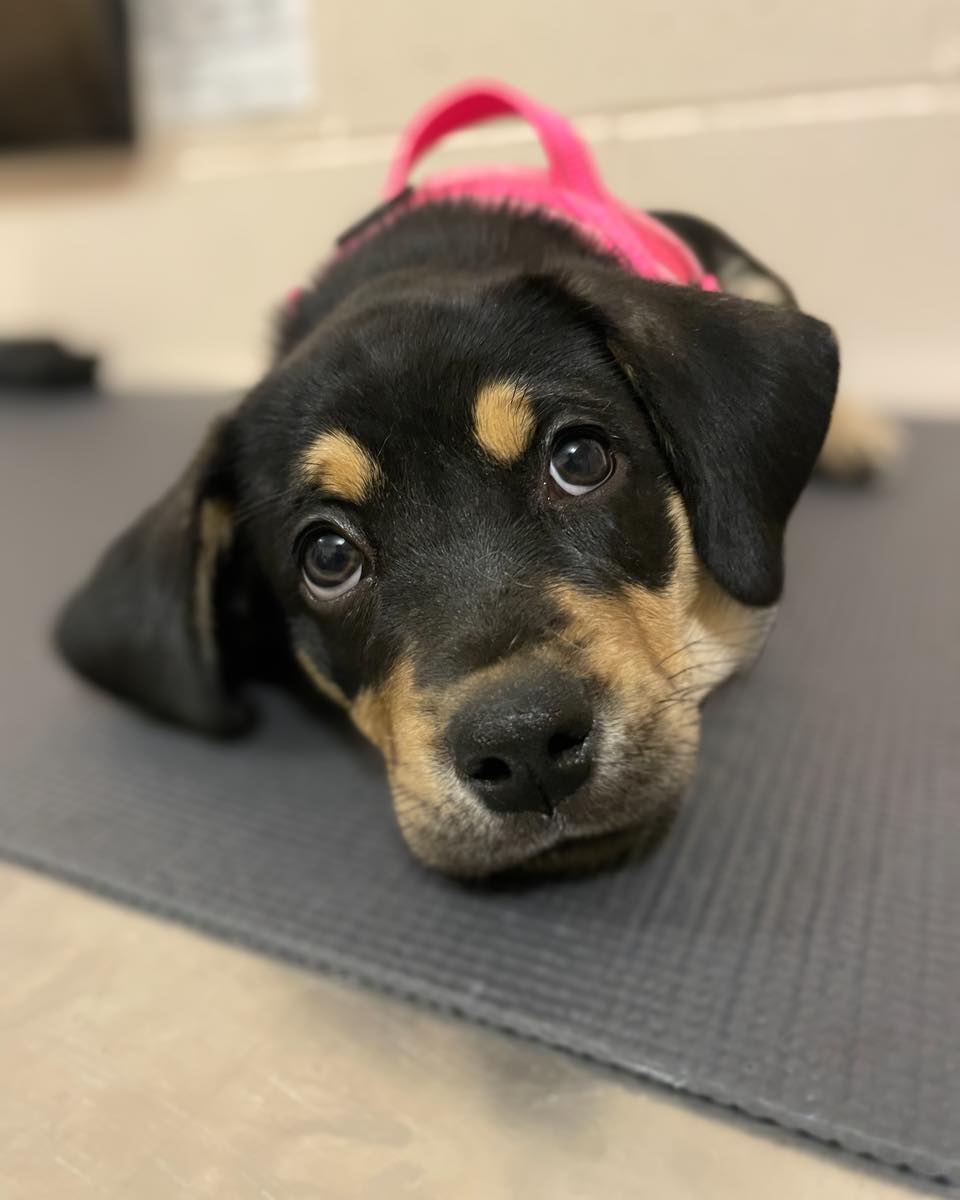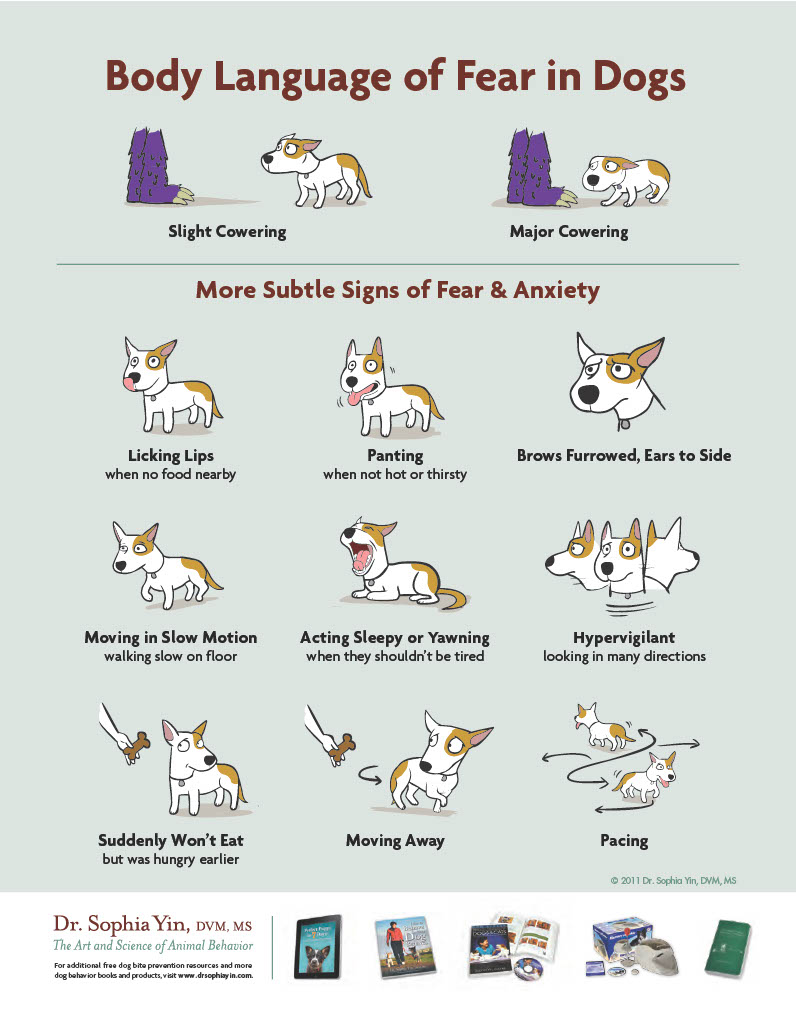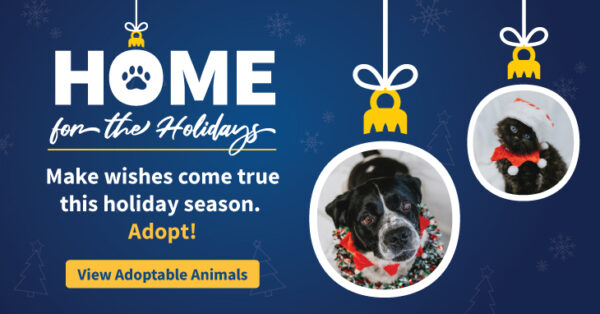How to understand canine body language to better understand behaviour
by Ontario SPCA and Humane Society | Dog Care | September 8, 2023

Understanding what your dog is communicating through their body language can help you as a pet parent in so many ways! In this blog, we’re sharing key body language to watch for, and what this is telling you about your dog.
What is my dog trying to tell me?
Body language is made up of a dog’s body postures, facial expressions, and the position and carriage of certain body parts, like ears, tail and mouth position and movement. Knowing the basic postures and what they mean can help you as a dog caregiver deal with problems more effectively and enjoy your dog’s company more fully because you can understand canine communication.
It’s important to remember to look at the big picture and read your dog’s whole body, not just certain areas. It’s also important to look at the environment.
Signs of discomfort
If your dog is uncomfortable with a situation, or experiencing mental or physical discomfort, they may exhibit the following signs:
- Whale eye (whites or sclera of eyes showing)
- Lip licking
- Yawning
- “Wet dog shake” – a dog shaking off out of context (not wet), is a release of tension and may mean your dog is experiencing a stressful event
- Turning head away
- “Kiss to dismiss” licking the face after previous behaviours seen, or in a situation where a person or another dog enters the dog’s space (typically near their face)
The above are likely to be accompanied by stiff or slow movements, lowered body and head or an attempt to lean away from another animal person or thing.
Offensive postures
Offensive aggression is typically displayed when a dog feels threatened and feels the need to act before something happens to them. Offensive postures can include:
- A stiff, straight-legged upright stance
- Stiffened rear legs, leaning forward with neck extended
- Tail is stiff and above spine level, just the tip may be moving
- Direct stare
- Upright ears, facing forward
- Piloerection (hackles up) along the top of the back
- Dilated pupils, eyes fully open, hard eye/whale eye (whites of eye showing)
- Directly facing opponent (standing square), possibly moving toward him
- Offensive mouth pucker (only front teeth including canines are exposed)
- Might be growling
Conflict-related postures
Conflict related postures appear when a dog is experiencing some form of conflict, meaning they are unsure of the consequence of a situation, or are dealing with opposing feelings in that moment or interaction. For example, if they are both excited and fearful of meeting a new dog or person. It can also occur if they have a learned experience that tells them the consequence of the situation will be negative. Conflict-related postures can include:
- Crouching low to the ground, leaning back
- Head tucked in
- Tail curved down and tucked between legs, covering the genitals
- Dilated pupils, eyes fully open, hard eye/whale eye (whites of eye showing)
- Ears flattened sideways or backward on the head
- Turning sideways to the opponent, not straight on
- Open-mouthed, all teeth exposed
- Lip licking or tongue flicking
- Stress yawning
Defensive postures
Defensive postures or defensive aggression occurs when a dog attempts to avoid situations or conflict by displaying behaviours to avoid aggression, but then escalates their behaviour when those displays do not work. Signs include:
- A stiff, low to the ground stance with body weight over back legs
- Tail low or tucked and still or flicking
- Pupils dilated
- Ears back, head low
- Piloerection (hackles up) along the top of the back
- May have glassy eyes, squinted or with whites of eyes showing
- Attempting to shrink or move away, may be slightly turned, posed to run, or curled in a U-shape
- May display teeth or have a tightly closed mouth accompanied by tongue flicking
- Might be growling

Why learn canine body language?
The ability to read canine body language will help you understand what your dog is communicating. From there you can implement the proper intervention, such as enrichment, socialization, or behaviour modification.
Understanding what dogs are communicating through their body language can also help you understand your dog’s emotions and motivations for their actions and behaviours. It will also help you respond more accurately to their behaviour .
For more tips on caring for and understanding your dog, check out our blogs on dog care!
Categories
Testimonial
Thank you for your dedication
Thank you for your dedication to helping the animals. Every animal deserves a loving home and to be treated royally. Just imagine a day without animal cruelty. What a wonderful day that would be!
